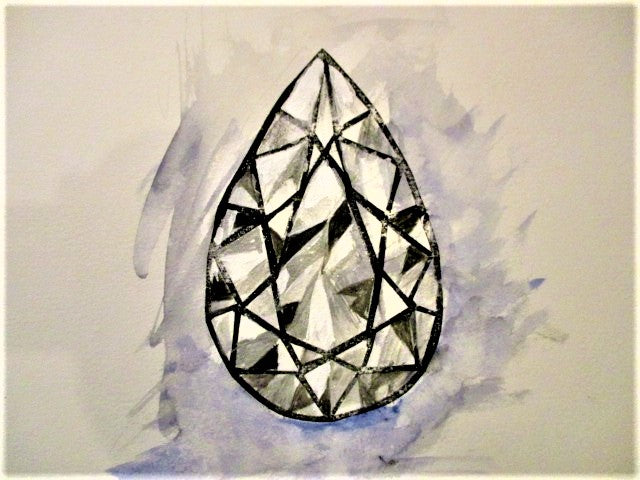The Symbolism of Diamonds, April's Birthstone

Diamonds are very well known as the strongest and hardest natural mineral. But, what do they symbolize?
Get to know the birthstone for the month of April (and the popular choice to engagement rings all over the world) right here.

Diamonds are very well known as the strongest and hardest natural mineral, ranking a "10" (the highest) rating on the Mohs Scale of Hardness. Essentially diamonds are so hard, the only mineral that can scratch them are other diamonds; diamonds are also the most brilliant of all gems, with unsurpassed clarity. April babies are lucky enough to call diamonds their birthstone, so this month, we're sharing some of the stone's symbolism.
A Symbol of Enduring Love
Most of our inventory consists of certified conflict-free diamond engagement ring designs. Although diamonds were sometimes used in ancient Roman engagement rings, with the widely held belief that they'd assist in love and harmony when gifted to the bride, the gem wasn't always a modern staple. De Beers, of course, popularized the diamond engagement ring in the 1900s.
Diamonds are formed over the course of millions of years, deep in the Earth's mantle, under tremendous pressure. There are a few poetic metaphors we can take from that process alone, as it pertains to relationships; a marriage is a partnership that should be unbreakable and enduring under any circumstance. A marriage should come through any challenge stronger and more beautiful than ever, right?
But, on a practical level, diamonds are very sturdy. As beautiful as they are, the gems are durable enough to be worn every day, as most people do. But even before diamonds were popularized as the romantic engagement gem of choice, they had tremendous symbolism and reverence in ancient civilizations aside from being a representation of enduring love with another.

Painting by Frank Chin, Dana's dad.
The Test of Time
All sources agree that the first diamonds were discovered in the ancient rivers and streams of India about 3,000- 6,000 years ago. According to The Old Farmer's Almanac, Indian diamonds were referred to as vajra which translates from Sanskrit to "lightning"- the weapon of the King of the Gods, Indra. One can imagine finding a glistening diamond in a riverbed and thinking of the King of the Gods striking that body of water into the ground with one of his trusty lightning bolts!
Other research by the Gemological Institute of America (GIA) indicates that an anonymous 2nd-century poet maintained that diamonds ward off the evil eye. Over the centuries, some have believed the diamond to be an antidote to poison or "a boon for longevity, strength, beauty and happiness."
As they're known to us today, the word "diamond" is derived from the Greek adamas which means "unbreakable" or "indestructible." As the gem itself is quite strong, wearing the gem is said to make one victorious by attracting strength and courage. Similarly 14th-century mystics believed the diamond to make its wearer invincible. In fact, diamonds have been worn throughout history by countless figures who believed the stone to be a powerful talisman.
Today, diamonds are mined all over the globe, from African nations including Botswana, to Australia and even Canada. In fact, there is said to be about 970 million carats waiting to be found in the frozen tundra, and Russia is now one of the top producers of diamonds by both volume and value
In addition to being the birthstone for the month of April and a popular choice for engagement rings worldwide, diamonds are also the gift of choice for 60th and 75th wedding anniversaries.
MORE:
- What Is a Diamond?
- The Lazy Person's Guide to the 4 Cs of Diamond Quality
- Shop ALL of our Ethically Handmade Diamond Engagement Ring Designs
Source: April Birthstone via gia.edu


Leave a comment